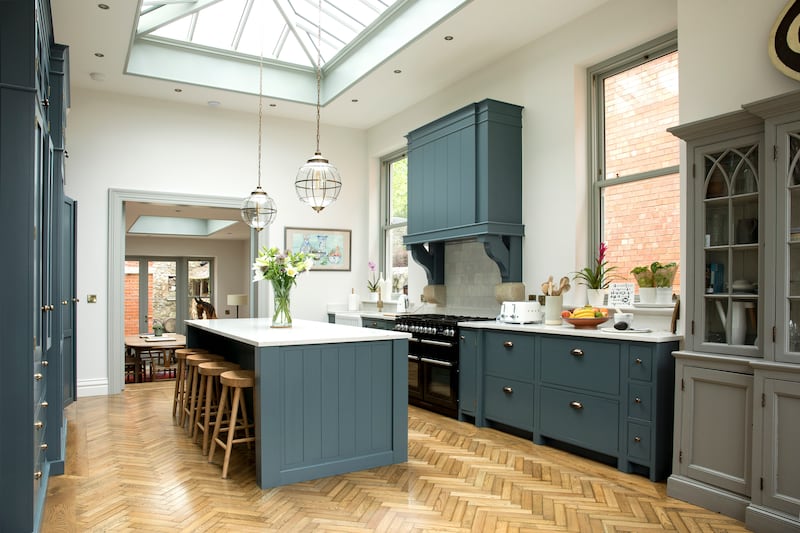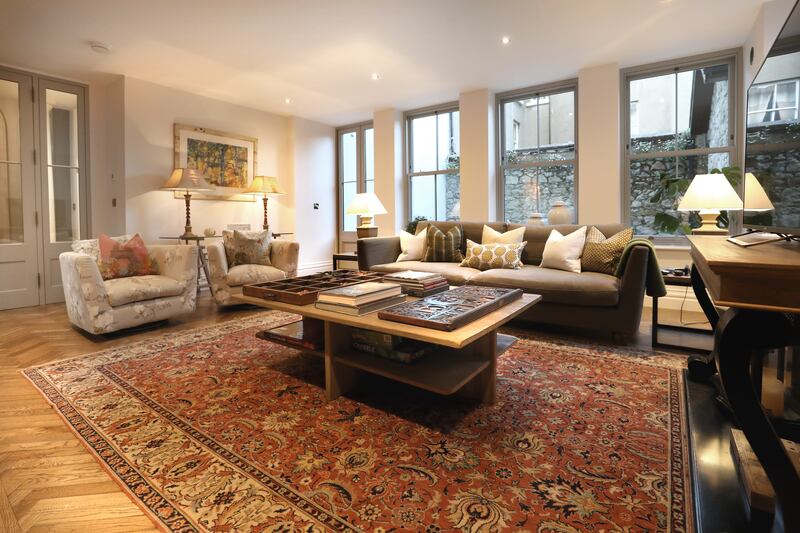Montpelier on Ardeevin Road in Dalkey was originally constructed in 1860 by John Cunningham, who also built the first two houses on the road, and Laragh, which lies next door. Nearby Cunningham Road takes its name from the one-time local quarry owner turned contractor.
When it was purchased in 2006 by its current owners, Montpelier had “one turquoise bathroom and no central heating”. The handsome redbrick had been the surgery of the late Goggins father-and-daughter GPs, and was up for auction as an executor sale. It had a floor area of 372sq m (4,000sq ft) and six/seven bedrooms, some of which were pokey offerings over a narrow three-storey return.
It was a house with lots of potential, and what is for sale now, 17 years later, is a stunning house that has realised that potential through the meticulous endeavours of its owners, who describe themselves as having “a bit of a passion for restoring old homes”.




It wasn’t their first restoration, and that was probably just as well, as the work was of mammoth proportions. Over the intervening years they continued to upgrade the house into what it is today: a fabulous 423sq m (4,600sq ft) home in mint condition. As the owners are now trading down from Montpelier, they have placed their lovely home on the market through Sherry FitzGerald, seeking €4.5 million.
Trevor Dobbyn, principal at Fabrica Architects, drew up plans for the substantial renovation, where “every idea we had, he transformed into reality and nothing was too much trouble”. The property was extended to the rear, so gone are the pokey rooms, which have all been extended by two metres on the three returns.




Now a substantial kitchen set in a Hampton orangery is to the side of the house, off an elegant hallway. “The brief was we wanted the kitchen to have the same heights [3.6m] as the reception rooms lying opposite. When we moved in it was little more than a scullery, and we wanted lots of light.” It is now bathed in light thanks to a large roof lantern coupled with fine sash windows – also supplied by Hampton – and is home to an Andrew Pedlow-designed kitchen.
All cooking is done in a large Nexus Rangemaster gas oven with a full-sized Liebherr fridge and separate freezer offering plenty of storage. Underfoot is new herringbone oak parquet, which has been treated with Blanchon black oil to give an aged effect; the oil goes deep within the grain, giving a lovely patina. Off this area, steps down lead to a breakfast room, which opens into a fine, spacious family room through a set of fold-back doors, which can be closed, as can a set of pocket doors between the kitchen and the breakfast area.




Ryan & Smith Fireplaces in Tyrone were engaged to restore period fireplaces in the two elegant reception rooms, opposite the kitchen. They were whisked off to Northern Ireland, where they were dismantled, repaired and cleaned with the addition of new inserts, giving an indication of the level of detail involved in the property’s restoration.
Paul Griffin* from the National Guild of Master Craftsmen was engaged to repair coving, ceiling roses and cornicing. His company, Griffin Plastering, spent six weeks restoring plaster back to its original detail. Dan & Den Restoration in Kiltipper did “an amazing job on pointing the stone exterior, which they did by wigging”.
All original pine floorboards were renovated by Assured Sanding in Dún Laoghaire, and were also treated with Blanchon oil to give a more sophisticated finish than just a coat of varnish.
The house now has five fine bedrooms, and the main would give any five-star hotel a run for its money. As the house is on a slight incline, there are wonderful views to Howth across Dublin Bay through a pair of fine arched windows. Unadorned, they need no curtains as the property is set well back from the road, allowing for ample privacy.
The gardens behind the original gates have been seamlessly widened and extend to 0.6 of an acre. Pallas Paving Groundworks did a great job with the paving, while their heritage stonemason “spent days chiselling and hammering stone so the pieces would interlock properly in the small wall built to surround one of the trees”.
A beautiful surprise is the cut-stone coach house with its exposed granite facade. Seventeen years ago it was a hay loft and a coal shed, now been transformed into a one-bedroom guest suite with a kitchen. Of further interest are the remains of a folly, which was so covered in ivy and random trees that “it was invisible” when the house was purchased in 2006. Today its castellated walls remain, adding interest to the courtyard between the main house and garden. The garden, extending to 0.6 of an acre, is so generous that, subject to planning permission, there’s space for a whole other house.
*This article was amended to identify Paul Griffin and his company, Griffin Plastering, as being responsible for the restoration of the plaster in Montpelier
















